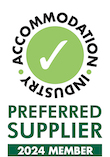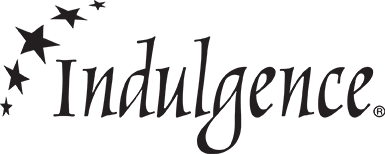Cleaning Your Airbnb After a COVID-19-Positive Guest Has Left
Coronavirus disease 2019 or COVID-19, is an acute respiratory syndrome caused by a novel coronavirus.
Coronaviruses are a large family of viruses that cause a wide variety of diseases. These range from the common cold to more severe respiratory illnesses. A novel coronavirus refers to a new strain, not previously identified in humans.
Symptoms of COVID-19 can include dry cough, fever, and shortness of breath. In more severe instances, the infection can lead to pneumonia and can be fatal.
COVID-19 was first identified in Hubei Province, China, in December of 2019. It has since spread to over 200 countries and territories, with over 2 million confirmed cases. On March 11, 2020, the World Health Organization declared COVID-19 a global pandemic.
Despite the global crisis, many Airbnb proprietors continue to host guests in their properties. This is mainly through the Frontline Stays Program, which offers accommodation to COVID-19 medical workers. As an active Airbnb host, it's essential to review your cleaning routine to protect yourself and your guests from the coronavirus.
And to do this, you need to understand a few critical facts about COVID-19:
How Does COVID-19 Spread?
COVID-19 spreads through respiratory droplets from the nose or mouth of an infected person. The two primary ways through which people come into contact with these droplets are:
Person to Person Transmission
This is the most significant way through which the virus spreads. It occurs when people are in close contact with an infected person (less than 6 feet).
When an infected person coughs, sneezes, or talks, they send droplets into the area around them. These droplets can land in the eyes, mouths, or noses of people nearby, infecting them with the virus.
Note that the virus may also spread from people who are not showing symptoms. Observing social distancing (staying 6 feet apart) is key in preventing person-to-person transmission.
Contaminated Surfaces and Objects
Similarly, infected people can contaminate surfaces and objects around them with respiratory droplets. Healthy people can then contract the virus through contact with infected surfaces. The virus can transfer from their hands to their eyes, nose, or mouth when touched with unwashed hands.
The most effective way to avoid this kind of transmission is to wash your hands often with soap and water.
You should also clean and disinfect frequently touched surfaces regularly.
Factors That Influence the Risk of COVID-19 Infection
 Image: courtesy
Image: courtesy
Most people who contract COVID-19 show mild symptoms and recover within days. However, some people are more likely to contract the disease and have the illness hit them harder if they do.
Airbnb hosts need to understand factors that increase the risk of severe illness to protect themselves and their guests.
Generally, there are four high-risk groups:
- People over 65, regardless of any medical conditions.
- People under 65 with underlying medical conditions, including people who have:
- Acute respiratory or lung diseases
- Neurological conditions
- A missing or compromised spleen
- A weakened immune system
- A BMI of 40 or above
- Heart, liver, or kidney disease
- Diabetes
- Pregnant Women
- People with complex health problems, like people who:
- Take immunosuppressant medication
- Require regular dialysis
- Have cancer
Additionally, certain lifestyle factors like smoking can increase one’s risk factor.
How to Clean and Disinfect Your Airbnb
Now more than ever, cleanliness is at the top of the minds of both hosts and guests. Cleaning and disinfecting is the first line of defence against the spread of COVID-19.
“If you live with other people or individuals come to your home, it would be a good idea to disinfect common surfaces like kitchens, bathrooms, laundry areas, computers, and phones.
The rule of thumb is that if someone used an area and you are going to use that area, clean it off. If you don’t have cleaning products, wash your hands carefully after use of any common surfaces and areas.”
Carl J. Fichtenbaum, MD, Professor of Clinical Medicine at the University of Cincinnati, College of Medicine
Studies have shown that the virus can persist on various surfaces for up to several days. This is why it’s essential to clean and disinfect regularly. Especially between reservations.
Cleaning vs Disinfecting
 Image: courtesy
Image: courtesy
To properly clean and disinfect, you need to understand the difference between the two.
Cleaning refers to the act of removing visible dirt from surfaces using soap and water.
Disinfecting refers to the use of chemicals to kill germs and other microorganisms.
To reduce the risk of COVID-19, you should first clean and then disinfect surfaces.
What Are the Steps for Cleaning and Disinfecting Your Airbnb?
The CDC recommends limiting access to your rental space for up to 24 hours after each guest’s stay.
Hosts participating in the Frontline Stays Program have to wait at least 72 hours between reservations. This allows for enough time to clean and disinfect due to the higher risk of COVID-19 exposure.
To clean your rental space after a COVID-positive guest, you first need to protect yourself. You can do this through the use of the recommended personal protective equipment (PPE).
Additionally, you should use disposable equipment when cleaning. Disposable cleaning cloths, for instance, are highly recommended. If you use non-disposable cleaning cloths, launder them in a hot water wash between each use.
What Are the Recommended PPEs For Cleaning After a COVID-19 Positive Guest?
-
Disposable Gloves
Wear disposable gloves whenever you clean or disinfect the space. Discard the gloves if they get damaged, soiled, and when finished cleaning. DO NOT reuse disposable gloves.
If you use reusable gloves, only use them to clean and disinfect for COVID-19 and nothing else. Ensure to clean and disinfect them as per the manufacturer’s instructions after use. And wash your hands immediately after taking them off.
-
Face Mask
Wear a surgical face mask to protect your mouth and nose from droplets on various surfaces.
-
Eye Protection
Protect your eyes with goggles, especially in situations where splashing might occur.
Note: DO NOT touch your face when cleaning or wearing the PPE, or with unwashed hands.
How to Clean and Disinfect Hard (Non-Porous) Surfaces
Clean these surfaces with detergent or soap and water before disinfecting.
Diluted household bleach solutions (about 1000ppm) should suffice to disinfect appropriate surfaces. Just be sure to follow the manufacturer’s instructions when using the products.
Ensure a contact time of at least 1 minute, with proper ventilation during and after use. You should also check to confirm that the products are not past their expiration dates.
Note: You should never mix bleach with ammonia or any other cleaning chemicals:
 Image: courtesy
Image: courtesy
How to Clean and Disinfect Soft (Porous) Surfaces
Porous refers to surfaces such as carpets, drapes, rugs, and other textiles.
Clean visible dirt and contamination from porous surfaces using appropriate cleaners. Machine wash applicable items using the warmest setting and allow them to dry completely.
For items you cannot launder, use approved household disinfectants suitable for porous surfaces.
Note: You should only use vacuum cleaners after disinfecting other surfaces.
How to Clean and Disinfect Electronics
These include everything from telephones and remote controls, to switches and buttons on the A/C unit.
Follow the manufacturer’s instructions for appropriate cleaning products to remove visible dirt.
If no instructions are available, use an alcohol spray, or alcohol-based wipes with at least 60% concentration.
You should also consider using wipeable covers on your electronics. For example, you can place remote controls in a zip-lock bag.
How to Clean and Disinfect Linens and Other Laundry Items
Don't shake dirty laundry. This can disperse the virus through the air and contaminate surrounding areas.
Collect dirty laundry in a laundry bag. Alternatively, you can use a bag liner in your hamper, preferably a disposable or washable one.
Empty the laundry directly from the laundry bag into the machine with no handling. Wash the items as per the manufacturer’s instructions, and using the warmest setting where possible.
Soap, water, and heat kill the COVID-19 virus, so your laundry will be safe to handle after a wash and proper drying.
Do not use compressed air, pressurized water, or any method that can cause splashing to clean.
Disinfect your laundry hamper, and don’t forget to wash your hands with soap and water.
Waste Disposal to Prevent the Spread of COVID-19
Line a garbage can with a sturdy leak-proof plastic bag to dispose of all soiled material. This includes all disposable PPE, cleaning equipment, and waste from the room.
Always use gloves when taking out the garbage, and wash your hands after handling the trash.
Consult your local health department for garbage disposal guidelines if available.
Consider the following table showing common household disinfectants and how to use them:
 Image: courtesy
Image: courtesy
Best Practices to Protect Yourself and Your Guests From COVID-19
As with other respiratory infections, there are measures you can take to curb the spread of COVID-19. You should:
-
Wash your hands often with soap and water for at least 20 seconds. If soap and water are not readily available, use a hand sanitizer with at least 60% alcohol.
 Image: courtesy
Image: courtesy - Avoid close contact with people who may be sick or exposed. Remember that people without symptoms can still spread the virus.
- Cover your mouth and nose with a recommended face mask. This reduces the chances of transmitting the virus through droplets.
-
Cover your mouth and nose when you cough or sneeze. You can either use a tissue or the inside of your elbow. Discard the tissue immediately and wash your hands.
 Image: courtesy
Image: courtesy - Clean and disinfect frequently touched surfaces regularly. These include:
- Door handles and light switches
- Tables and countertops
- Non-fabric armrests
- TV buttons, remote controls, telephones, air conditioner buttons, and fridge door handles
- Bathroom door handles and locks, taps, washbasins, counters, toilet seats, and baths/showers
Use this cleaning checklist to make cleaning your Airbnb space more efficient.
You can also take some extra steps to further reduce the risk to your Airbnb guests. For instance, you can encourage social distancing by offering self-check-in and check-out.
Additionally, you can encourage your guests to observe a high standard of hygiene by stocking these essentials:
- Alcohol-based hand sanitizer
- Hand washing soap
- Disposable gloves and wipes
- Paper towels
- Tissues
Include extra towels for guests staying longer than a couple of days, as well as disinfectants and other cleaning supplies. This will encourage them to clean up after themselves.
If they wish to wash their linens or do laundry, you can print out cleaning instructions to help them stick to CDC guidelines.
Source: Master1305


 Image:
Image:  Image:
Image: 












